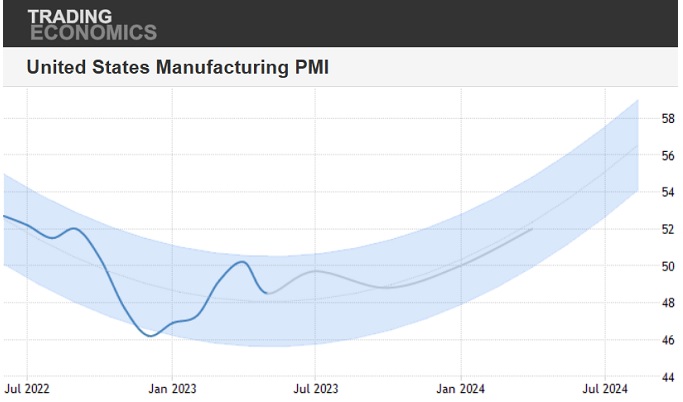
Navigating the Future: Economic Forecast for the USA

Peering into the Crystal Ball: Economic Forecast for the USA
Understanding Economic Forecasting
Economic forecasting is akin to peering into a crystal ball, attempting to discern the future trajectory of a nation’s economy. In the case of the United States, economic forecasting plays a crucial role in guiding policy decisions, aiding businesses in strategic planning, and providing individuals with insights into potential economic trends.
Macroeconomic Indicators and Trends
Macroeconomic indicators serve as the foundation for economic forecasting. Factors such as GDP growth, inflation rates, unemployment figures, and consumer spending patterns are meticulously analyzed. These indicators provide a snapshot of the overall health of the economy and offer clues about its future direction.
Global Influences on the US Economy
In an interconnected world, global influences play a significant role in shaping the economic landscape of the USA. Economic forecasts take into account international factors such as trade dynamics, geopolitical events, and the global economic climate. Understanding these external influences is essential for crafting accurate economic projections.
Impact of Monetary Policy
Monetary policy, governed by central banks, has a profound impact on economic conditions. Interest rates, money supply, and credit availability are powerful tools used to manage inflation, stimulate economic growth, or cool an overheated economy. Economic forecasts closely monitor shifts in monetary policy to gauge their implications.
Fiscal Policy and Government Spending
Government fiscal policy, encompassing taxation and spending decisions, is another key factor in economic forecasting. Forecasts assess how government policies may influence economic activity, employment, and investment. Anticipating changes in fiscal policy allows businesses and individuals to adapt their strategies accordingly.
Sectoral Analysis and Industry Trends
Economic forecasting drills down to sector-specific analysis, examining the performance and trends within industries. Whether it’s the technology sector, healthcare, or manufacturing, understanding the nuances of each industry provides a more granular perspective on the economic outlook. Sectoral forecasts guide investment decisions and business planning.
Consumer Behavior and Market Sentiment
Consumer behavior is a linchpin in economic forecasting. Understanding how consumers respond to economic conditions, their spending patterns, and market sentiment helps predict demand for goods and services. Consumer confidence indices and market sentiment surveys contribute valuable data to economic forecasts.
Technological Advancements and Innovation
The pace of technological advancements influences economic forecasts. Innovations such as artificial intelligence, automation, and digital transformations have profound implications for productivity, job markets, and industry landscapes. Economic forecasts integrate these technological trends to anticipate their impact on the economy.
Environmental, Social, and Governance (ESG) Considerations
Modern economic forecasting goes beyond traditional metrics to incorporate Environmental, Social, and Governance (ESG) considerations. Factors such as sustainability practices, social responsibility, and corporate governance are increasingly influential in shaping economic forecasts. A holistic view that considers ESG factors provides a more comprehensive economic outlook.
Economic Forecast USA: Navigating Opportunities at Careerth.com
For those looking to navigate the economic landscape, staying informed about economic forecasts is crucial. Careerth.com offers valuable resources and opportunities for individuals seeking to align their career paths with the economic trends shaping the USA. Visit Careerth.com to explore how you can navigate opportunities in the ever-evolving economic landscape.
Conclusion: A Roadmap for the Future
In conclusion, economic forecasting serves as a roadmap for the future, guiding individuals, businesses, and policymakers. While no crystal ball guarantees absolute accuracy, a well-informed economic forecast provides valuable insights for making informed decisions and navigating the uncertainties of the economic landscape.
